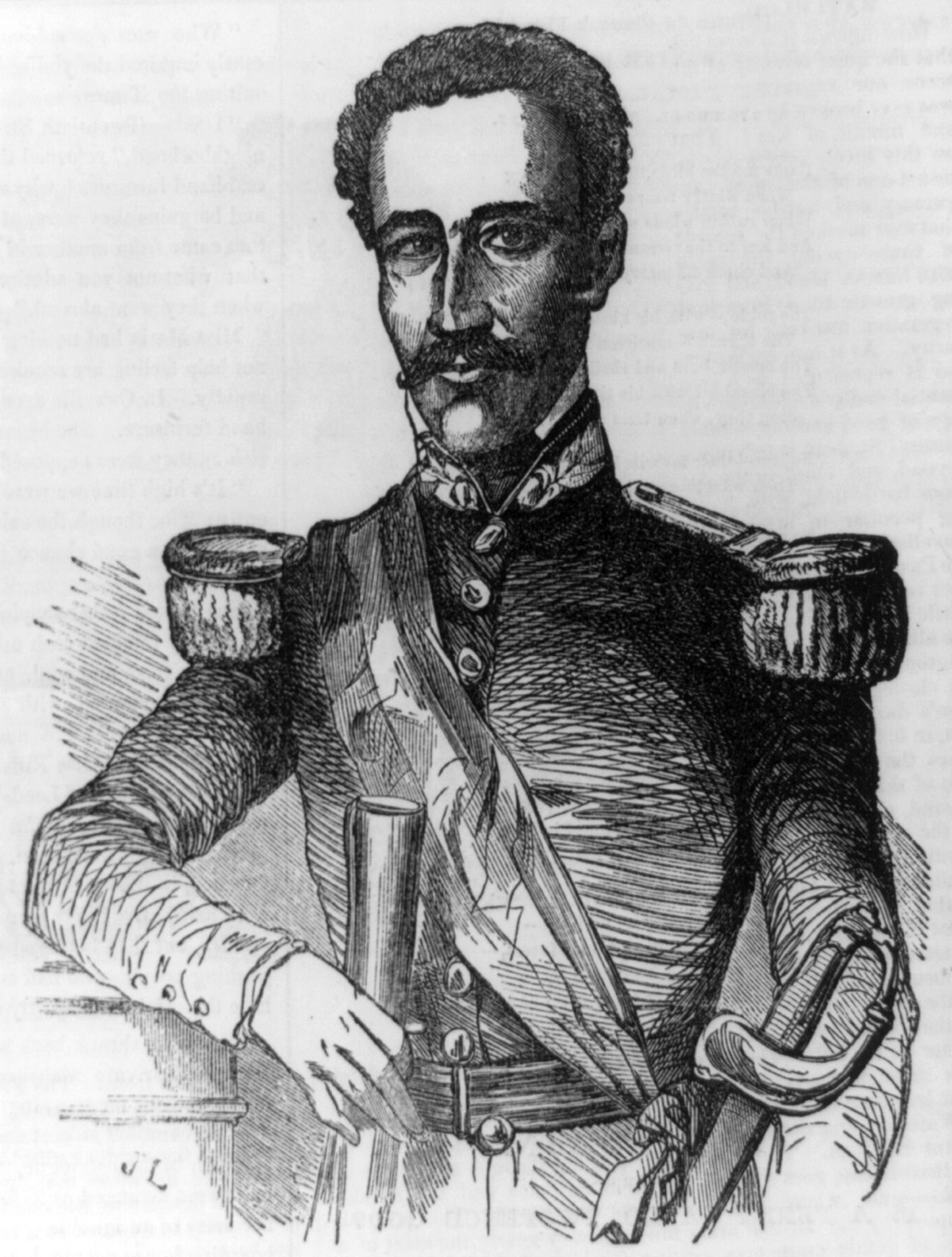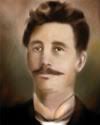|
Juan Bautista Vicini Cabral
Juan Bautista 'Gianni' Vicini Cabral (Genoa, 7 April 1924–Santo Domingo, 27 April 2015) was an Italian Dominican businessman, chairman of Grupo Vicini. Biography Vicini was born on 7 April 1924 in Genoa, Italy, during a vacation of his family, to the Italian-Dominican businessman Felipe Augusto Vicini Perdomo (half-brother of President Juan Bautista Vicini Burgos) and Dominican heiress Amelia María Cabral Bermúdez (daughter of José María Cabral y Báez and sister of José María Cabral Bermúdez). His siblings were: Laura Amelia (1925–2006), who married Amadeo Barletta Ricart, the son of Amadeo Barletta Barletta; José María (1926–2007), who married María Elena Pérez Branger; and Felipe de Jesús Vicini Cabral (1936–1997). He was first cousin of Donald Reid Cabral, President de facto of the Dominican Republic, first cousin-once removed of José María Cabral, film director, and second cousin of Peggy Cabral, vice mayor of Santo Domingo. He married ... [...More Info...] [...Related Items...] OR: [Wikipedia] [Google] [Baidu] |
Santo Domingo
, total_type = Total , population_density_km2 = auto , timezone = AST (UTC −4) , area_code_type = Area codes , area_code = 809, 829, 849 , postal_code_type = Postal codes , postal_code = 10100–10699 (Distrito Nacional) , website Ayuntamiento del Distrito Nacional Santo Domingo ( meaning "Saint Dominic"), once known as Santo Domingo de Guzmán and Ciudad Trujillo, is the capital and largest city of the Dominican Republic and the largest metropolitan area in the Caribbean by population. As of 2022, the city and immediate surrounding area (the Distrito Nacional) had a population of 1,484,789, while the total population is 2,995,211 when including Greater Santo Domingo (the "metropolitan area"). The city is coterminous with the boundaries of the Distrito Nacional ("D.N.", "National District"), itself bordered on three sides by Santo Domingo Province. Founded by the Spanish in 1496, on the east bank of the Ozama River and then moved by Nicolás de Ovando in 1502 ... [...More Info...] [...Related Items...] OR: [Wikipedia] [Google] [Baidu] |
Captaincy General Of Venezuela
The Captaincy General of Venezuela ( es, Capitanía General de Venezuela), also known as the Kingdom of Venezuela (), was an administrative district of colonial Spain, created on September 8, 1777, through the Royal Decree of Graces of 1777, to provide more autonomy for the provinces of Venezuela, previously under the jurisdiction of the Audiencia of Santo Domingo (and thus the Viceroyalty of New Spain) and then the Viceroyalty of New Granada. It established a unified government in political (governorship), military ( captaincy general), fiscal ( intendancy), ecclesiastical (archdiocese) and judicial ('' audiencia'') affairs. Its creation was part of the Bourbon Reforms and laid the groundwork for the future nation of Venezuela, in particular by orienting the province of Maracaibo towards the province of Caracas. History Antecedents The Bourbon dynasty had already taken steps towards reorganizing their overseas possessions and Venezuela, in particular. When the New Granadan ... [...More Info...] [...Related Items...] OR: [Wikipedia] [Google] [Baidu] |
Cabral, Barahona
Cabral is a town in the Barahona province of the Dominican Republic The Dominican Republic ( ; es, República Dominicana, ) is a country located on the island of Hispaniola in the Greater Antilles archipelago of the Caribbean region. It occupies the eastern five-eighths of the island, which it shares wit .... Climate References Sources World Gazeteer: Dominican Republic– World-Gazetteer.com Populated places in Barahona Province Municipalities of the Dominican Republic {{DominicanRepublic-geo-stub ... [...More Info...] [...Related Items...] OR: [Wikipedia] [Google] [Baidu] |
Buenaventura Báez
Ramón Buenaventura Báez Méndez (July 14, 1812March 14, 1884), was a Dominican politician and military figure. He was president of the Dominican Republic for five nonconsecutive terms. His rule was characterized by being very corrupt and governing for the benefit of his personal fortune. Genealogical studies have identified Buenaventura Báez as one of the fathers of the modern Dominican oligarchy, with many of his descendants dominating the political and economic life of the Dominican Republic today. He fathered several children, nine of which he recognized, while some were born in the Dominican Republic, others were born in Puerto Rico and France. Early years and family Báez was born in Cabral, Barahona, Rincón (now Cabral) in the Captaincy General of Santo Domingo, he was raised in his father's hometown Azua. Báez was the son of Pablo Altagracia Báez and Teresa de Jesús Méndez. His father Pablo, a wealthy merchant from Azua Province, Azua, was left in an orphanage ... [...More Info...] [...Related Items...] OR: [Wikipedia] [Google] [Baidu] |
Captaincy General Of Santo Domingo
The Captaincy General of Santo Domingo ( es, Capitanía General de Santo Domingo ) was the first colony in the New World, established by Spain in 1492 on the island of Hispaniola. The colony, under the jurisdiction of the Real Audiencia of Santo Domingo, was granted administrative powers over the Spanish possessions in the Caribbean and most of its mainland coasts, making Santo Domingo the principal political entity of the early colonial period. Due to its strategic location, the Captaincy General of Santo Domingo served as headquarters for Spanish conquistadors on their way to the mainland and was important in the establishment of other European colonies in the Western Hemisphere. It is the site of the first European city in the Americas, Santo Domingo, and of the oldest castle, fortress, cathedral, and monastery in the region. The colony was a meeting point of European explorers, soldiers, and settlers who brought with them the culture, architecture, laws, and traditions of the ... [...More Info...] [...Related Items...] OR: [Wikipedia] [Google] [Baidu] |
Venezuela
Venezuela (; ), officially the Bolivarian Republic of Venezuela ( es, link=no, República Bolivariana de Venezuela), is a country on the northern coast of South America, consisting of a continental landmass and many islands and islets in the Caribbean Sea. It has a territorial extension of , and its population was estimated at 29 million in 2022. The capital and largest urban agglomeration is the city of Caracas. The continental territory is bordered on the north by the Caribbean Sea and the Atlantic Ocean, on the west by Colombia, Brazil on the south, Trinidad and Tobago to the north-east and on the east by Guyana. The Venezuelan government maintains a claim against Guyana to Guayana Esequiba. Venezuela is a federal presidential republic consisting of 23 states, the Capital District and federal dependencies covering Venezuela's offshore islands. Venezuela is among the most urbanized countries in Latin America; the vast majority of Venezuelans live in the cities of the n ... [...More Info...] [...Related Items...] OR: [Wikipedia] [Google] [Baidu] |
Villa De Cura
Villa de Cura or Villa de San Luis Rey de Cura () is the main town in the Zamora district of the Aragua state in Venezuela. A small town, very dry between the months of October and April and rainy during the rest of the year, it is best known in Venezuela for being the cradle of one of the best all-male children choirs in the country, ''Niños Cantores de Villa de Cura'' . The tiny town is also well known by its '' chicharrones'' and ''cachapas'', all local foods. Prominent residents *Amador Bendayán, (1920–1989) was a Venezuelan actor and entertainer. * Consuelo Fernández, (1797-1814) was a resistance fighter in the Venezuelan War of Independence, given the honor of "heroine" Venezuelan War of Independence * José Pérez Colmenares, (1914–1944) was a baseball pioneer in Venezuela and a member of the National Team that captured the Baseball World Cup in 1941 Baseball World Cup [...More Info...] [...Related Items...] OR: [Wikipedia] [Google] [Baidu] |
Marcos Antonio Cabral
Marcos Ezequiel Antonio Cabral y Figueredo ( Bany, Island of Haiti, 10 April 1842 – Santo Domingo, Dominican Republic, 3 March 1903) was a Dominican military officer, renowned writer, speaker, and president of the Dominican Republic. Cabral married his second-cousin Altagracia Amelia Báez Andújar, the daughter of President Buenaventura Báez, and begat 7 children: José María José María (abbreviated José Mª) is a Spanish language male given name, usually considered a single given name rather than two names, and is a combination of the Spanish names of Joseph and Mary, the parents of Jesus Christ.Rafael Falcón, Chr ..., Ramona Antonia, Casilda, Pablo, Buenaventura, Mario Fermín, and Altagracia Amelia Cabral y Báez. 1842 births 1903 deaths People from Baní Presidents of the Dominican Republic Dominican Republic military personnel Dominican Republic male writers Dominican Republic people of Canarian descent Dominican Republic people of French desce ... [...More Info...] [...Related Items...] OR: [Wikipedia] [Google] [Baidu] |
Baní
Baní is a capital town of the Peravia Province, Dominican Republic. It is the commercial and manufacturing center in the southern region of Valdesia. The town is located 65 km south of the capital city Santo Domingo. Baní is the headquarters of the Southcentral General Directorate of the National Police, the Central Regional Directorate of the Ministry of Agriculture and the South Regional Directorate of the General Directorate of Traffic Safety and Land Transport (DIGESETT). Overview The city of Bani is the capital of the Peravia province; its residents also know it as the home of poets. The province's population is 169,865 people, with 61,864 living in the Bani metro area. This is a tightly knit community with families and neighborhoods dating back several centuries. Bani is a Taino word meaning "abundant water." The area was named after an important Taino leader of the Maguana people. He was said to be one of Caonabo's closest allies. But, it wasn't until 1764 when a ... [...More Info...] [...Related Items...] OR: [Wikipedia] [Google] [Baidu] |
Republic Of Genoa
The Republic of Genoa ( lij, Repúbrica de Zêna ; it, Repubblica di Genova; la, Res Publica Ianuensis) was a medieval and early modern maritime republic from the 11th century to 1797 in Liguria on the northwestern Italian coast. During the Late Middle Ages, it was a major commercial power in both the Mediterranean Sea and the Black Sea. Between the 16th and 17th centuries it was one of the major financial centers in Europe. Throughout its history, the Genoese Republic established numerous colonies throughout the Mediterranean and the Black Sea, including Corsica from 1347 to 1768, Monaco, Southern Crimea from 1266 to 1475 and the islands of Lesbos and Chios from the 14th century to 1462 and 1566 respectively. With the arrival of the early modern period, the Republic had lost many of its colonies, and had to shift its interests and focus on banking. This decision would prove successful for Genoa, which remained as one of the hubs of capitalism, with highly developed banks ... [...More Info...] [...Related Items...] OR: [Wikipedia] [Google] [Baidu] |
Zoagli
Zoagli ( lij, Zoagi) is a ''comune'' (municipality) in the Metropolitan City of Genoa in the Italian region Liguria, located about southeast of Genoa. Zoagli is a popular destination during all seasons of the year by tourists from all over the world. It is located in the Gulf of Tigullio section of the Italian Riviera, between Chiavari and Rapallo. The municipality is also known for its silk fabrics exported around the world and its cliff paths (creuze and mule tracks) that run along the Mediterranean Sea connecting Zoagli to its nearby villages: San Pietro di Rovereto, San Pantaleo, Semorile, St. Ambrose, and St. Martin. A bronze sculpture named the Madonna del Mare sits underwater in front of the promenade in honor of a diving event held each year. History Zoagli was probably founded by the Tigulli Ligurian tribe. In Roman times it appears as a center on the Via Aurelia in the Tabula Peutingeriana. In the Middle Ages it was a fief of the Fieschi family from Lavagna, beco ... [...More Info...] [...Related Items...] OR: [Wikipedia] [Google] [Baidu] |



